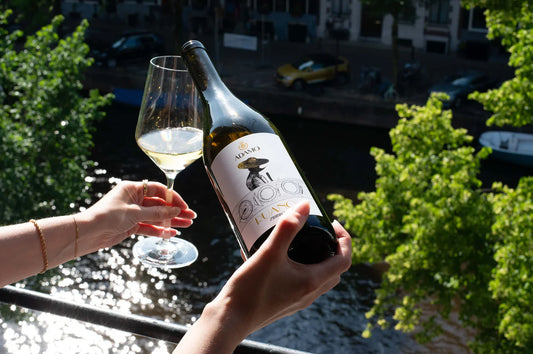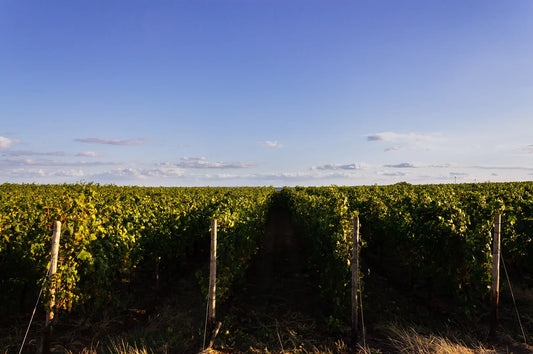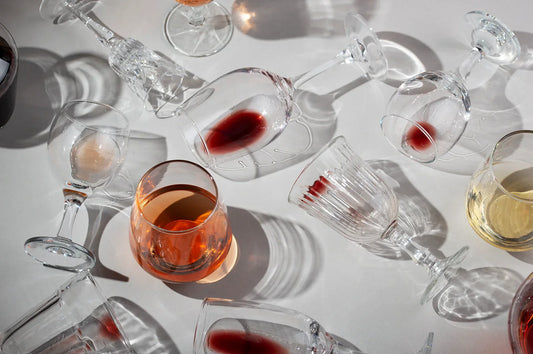The English sparkling wine industry has experienced a remarkable boom in recent years, with the number of vineyards in the UK nearly tripling over the past two decades. As the climate crisis impacts traditional wine regions, England's terroir has become increasingly suitable for producing high-quality sparkling wines. Today we're diving into everything you need to know about one of the world's most exciting (and fastest-growing) wine regions.
The English Sparkling Wine Explosion
The UK is now the fastest-growing wine region in the world, with a 74% increase in vine plantings between 2017 and 2022. In 2017, sparkling wine accounted for 68% of the wine produced in England and Wales, amounting to four million bottles. By 2022, England and Wales had more than doubled their wine production, reaching 12.2 million bottles.
Perhaps the main factor driving this growth is climate change. Rising temperatures have created increasingly ideal conditions for growing grapes in Britain, while simultaneously threatening traditional wine regions like Spain, Italy, and southern California. And as the climate continues to warm, the potential for English sparkling wine production is set to increase. By 2050, it is predicted that a fifth of the UK may have suitable weather conditions to grow high-quality grapes for still wines as well.
That a warming UK is producing outstanding wines should really come as no surprise. Long ago Great Britain was not an island but was in fact attached to what we now call France before breaking away. This means England shares the same soils that have for hundreds of years produced the world-class wines of France. It's climate that has always kept England from joining in on the wine-making party. And now, that obstacle is fading away.
The Champagne Connection
In addition to geological similarities, English sparkling wine producers often employ Champagne terminology to describe their wine styles, such as "Classic Cuvée," "Blanc de Blancs," or "Demi-Sec." The use of classic Champagne grape varieties - Chardonnay, Pinot Noir, and Pinot Meunier - and the use of the traditional method in making sparkling wines further strengthens the connection between England and France (perhaps not always to the delight of French winemakers!).
But what is English sparkling wine called? Unlike Champagne (and Cava and Prosecco), however, there is no single term to refer to UK bubbly. Perhaps something for the marketing people to work on.
English Wine Regions
So where specifically in England should you keep an eye on for fizz? Below is a breakdown of where to find the top brut in this newly winery-heavy land:
South East
The South East is the heart of sparkling wine production in England, accounting for over 75% of the total area under vine. The heart of this region is likely Kent, which boasts the largest area under vine of any county in England, with Gusbourne Estate and Chapel Down being its largest producers.
South West
The South West is the second-largest region for wine production in England. Camel Valley and Knightor are two of the largest producers here, both based in Cornwall. Camel Valley being the first English wine to receive a Royal Warrant!
Sussex Sussex
Which includes both East and West Sussex, has its own Protected Designation of Origin (PDO) for still and sparkling wine, making it the first region in England to have a distinct classification scheme. The county is home to some of the largest and most well-known producers, such as Nyetimber and Ridgeview, and is also the location of Plumpton College, which specializes in viticulture and winemaking courses.
Hampshire
While far from the largest winemaking area, Hampshire is home to Hambledon, England's oldest commercial vineyard, which dates back to the 1950s. That's quite a while by English standards, at least.
Closing Thoughts
The rise of English sparkling wine showcases the UK's thriving wine regions and the dedication of its producers. With the perfect combination of climate, entrepreneurial spirit, and international recognition, the future of English sparkling wine looks brighter than ever. As the industry continues to grow and evolve, English sparkling wine has solidified its place on the global stage, offering a unique and high-quality alternative to traditional sparkling wine regions.
Until next time, stay nosey!




